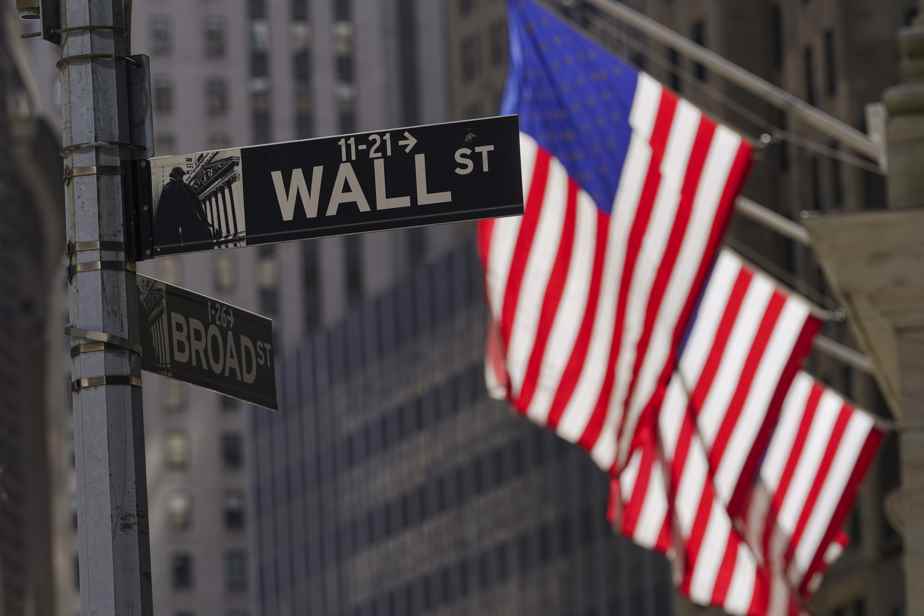(New York) The New York Stock Exchange ended sharply lower on Friday, taken aback by employment figures which testify to the strength of the American economy and which should encourage the country’s central bank (the Fed ) to continue to raise its rates.
Updated yesterday at 5:33 p.m.
The Dow Jones fell 2.11%, the NASDAQ index dropped 3.80% and the broader S&P 500 index dropped 2.80%.
The US economy added 263,000 jobs in September, compared to 315,000 in August, according to the report released Friday by the Department of Labor, slightly less than the 275,000 expected by economists.
“Even though this is the smallest gain since April 2021, it remains well above the 100,000 job creations needed to absorb new entrants to the labor market,” commented Daniel Vernazza of UniCredit.
“The Fed will surely see this report as solid and not as ‘a sign of a’ substantial slowdown that it says it expects before slowing its rate hike,” the economist added, in a note.
Investors also noted the unemployment rate’s surprise drop to 3.5% from 3.7% the previous month, which will also “frustrate the Fed as a tight job market may push wages up.” “, according to Jeffrey Roach, of LPL Financial.
Nancy Vanden Houten of Oxford Economics also noted that “the pressure on wages (had) decreased only marginally”, the hourly wage having increased by 5.0% over one year, against 5.3% the month previous.
For Nick Reece, of Merk Investments, “the key point” is to be found in the participation in the labor market of the population of working age, which fell to 62.3%, against 62.4% in August.
However, “the Fed would like to see more returns to the labor market”, which would help to curb inflation, according to him, by increasing the supply of labor in relation to demand.
Most economists are now expecting a further 0.75 percentage point hike in the Fed’s key rate in November, which would be the fourth in a row.
This prospect pushed bond rates up again. The yield on 2-year US government bonds, more representative of market expectations in terms of monetary policy than the 10-year rate, rose to 4.34%, a breath away from the 15-year high recorded at the end of september.
The 10-year rate rose to 3.88%, against 3.82% the day before.
This shift in bond rates has dragged with it the entire technology sector, sensitive to credit conditions, on which it depends to finance its growth.
No one was spared, especially not the heavyweights of the rating, whether Apple (-3.67%), Microsoft (-5.09%), Alphabet (-2.61%) and Amazon (-4 .77%). Meta (-4.04%) and Intel (-5.37%) even fell to their lowest level of the year.
The latter was also penalized by the profit warning from its competitor AMD (-13.87% to 58.44 dollars), which expects a turnover much lower than expected in the third quarter. , weighed down by the weakening of demand for PC computers, coupled with “significant” destocking which reduced the volumes ordered from the company in Santa Clara (California).
Besides Intel, AMD pushed the entire semiconductor sector to the depths, from Nvidia (-8.03%) to Broadcom (-3.97%).
Twitter fell slightly (-0.53% to 49.13 dollars), the day after a Delaware judge’s decision to suspend its legal action against Elon Musk until October 28 to give the parties time to eventually agree on the takeover of the platform by the entrepreneur.
Before this decision, the group with the blue bird had refused to give up its litigation, as requested by the boss of Tesla, who assured that he wanted to acquire the social network again.
Tesla has unscrewed him (-6.32% to 223.07 dollars), investors living badly the multiple twists of the Twitter saga and the uncertainty it poses to Elon Musk. The latter had however announced Thursday the first deliveries of his electric truck, at the beginning of December to PepsiCo, which confirmed Friday.
Jean icon Levi Strauss lost several sizes on Friday (-11.68% to $14.07) after revising its full-year profit and revenue target on Thursday 2022.
The group justified this warning by unfavorable exchange rate effects and “more cautious” forecasts on its European and American markets.
In Toronto
Canada’s main stock market index ended down nearly 400 points in a third straight day of decline amid better-than-expected jobs numbers and possible further interest rate hikes from both sides. sides of the border.
The Toronto floor’s S&P/TSX Composite Index lost 395.88 points or 2.1% to 18,583.13 points on Friday.
Colin Cieszynski, chief market strategist at SIA Wealth Management, pointed out that the markets have been hit hard, particularly in the United States.
Canada was given a bit of a boost by better-than-expected jobs numbers on Friday, as well as the rally in crude oil, according to Cieszynski.
The Canadian economy saw a slight increase in employment in September, while the unemployment rate fell to 5.2%.
BMO Chief Economist Douglas Porter wrote in a Friday morning note that the bank still expects a half-percentage-point rate hike at the Bank of Canada meeting this month. ci, but added that the upcoming business outlook survey and inflation data could be a game-changer.
Of course, analysts have indicated that some so-called bad news on jobs, inflation, or earnings could actually be good news for the market, as it could signal an end to rate hikes coming soon.
However, Mr. Cieszynski clarified that good news is always good news – the latest figures show that central banks have managed to deflate the bubble without plunging markets into a crisis.
“That means the economy is holding up,” he said. We don’t want everything to degenerate into a crisis. It would be a disaster for everyone. »
In the currency market, the Canadian dollar was trading at 72.80 cents US, down from its average price of 72.89 cents US on Thursday.
The Canadian Press
